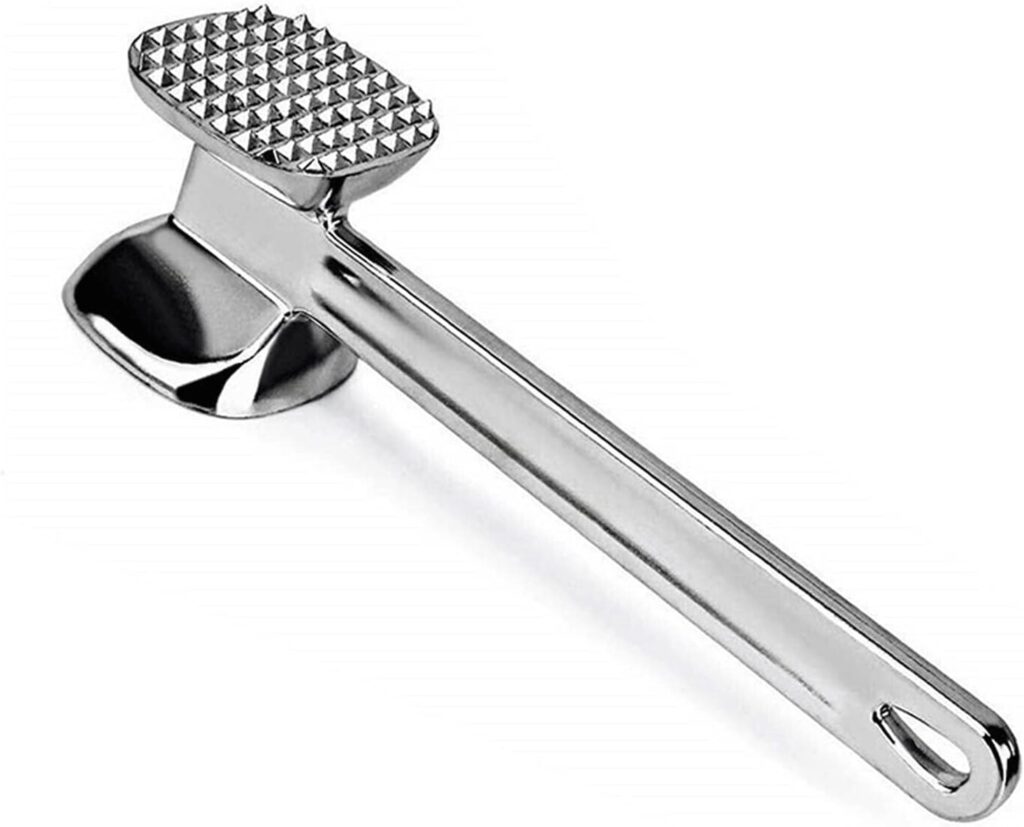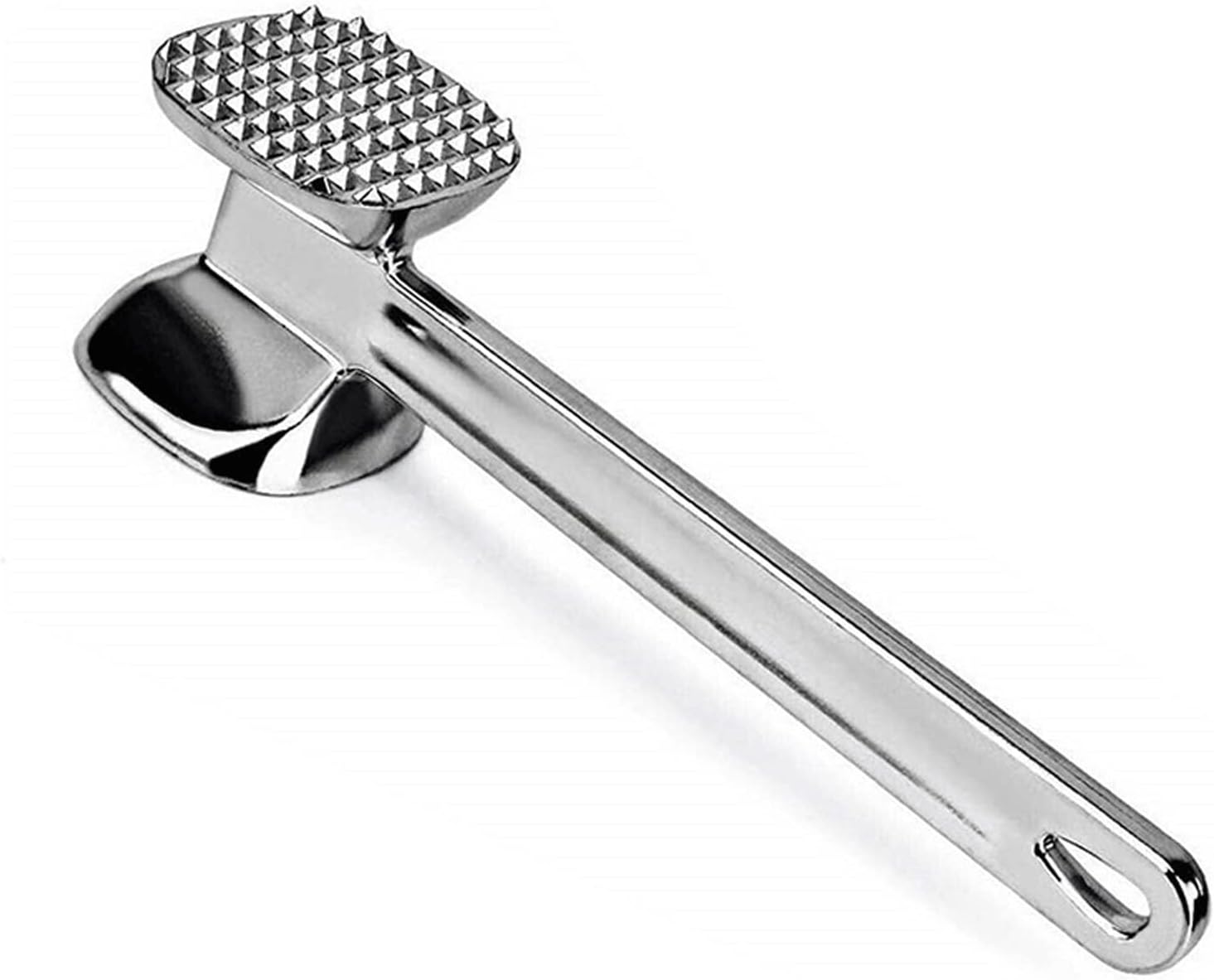
Meat Tenderizer Knuckle Duster: A Bizarre Intersection of Culinary and Combative Tools
The phrase “meat tenderizer knuckle duster” immediately conjures an image of a perplexing and potentially dangerous object. It represents an unusual fusion of domesticity and aggression, raising questions about its origins, legality, and practical applications. This article delves into the strange world of the meat tenderizer knuckle duster, exploring its various forms, historical context, and the legal ramifications associated with owning or using such a device. We’ll examine why this peculiar combination exists and whether it’s a novelty item, a legitimate tool, or something altogether more sinister.
What Exactly is a Meat Tenderizer Knuckle Duster?
At its core, a meat tenderizer knuckle duster is exactly what the name implies: a tool designed both to tenderize meat and to be used as a form of hand-held weapon, similar to brass knuckles. These devices typically feature a series of blunt protrusions or spikes on one side, intended for breaking down the tough fibers in meat, while the other side incorporates finger holes or a handle designed to fit around the user’s knuckles, providing a secure grip for striking. The design is inherently problematic, as it merges a legitimate culinary function with the potential for inflicting serious harm. Some variations are more overt in their weapon-like design, while others attempt to disguise the knuckle duster aspect within a more conventional meat tenderizer form. The materials used can vary widely, from metal and hard plastics to even wood, each affecting the weight, durability, and overall effectiveness of the meat tenderizer knuckle duster as both a culinary and combative tool.
Historical Context and Origins
Tracing the exact origins of the meat tenderizer knuckle duster is challenging, as it likely emerged from a convergence of existing tools and a desire for self-defense. Brass knuckles have a long history, dating back to ancient times, and have been used as weapons for centuries. Similarly, meat tenderizers have been a kitchen staple for generations. The combination of the two likely arose from a practical need for a multi-functional tool or perhaps as a novelty item capitalizing on the perceived toughness or resourcefulness of the user. It’s plausible that such a device was conceived in environments where both cooking and self-defense were common concerns, such as frontier settlements or areas with high crime rates. The meat tenderizer knuckle duster might have also surfaced as a product of prison culture, where inmates often create makeshift weapons from available materials. Regardless of its exact genesis, the meat tenderizer knuckle duster represents a fascinating, if unsettling, example of human ingenuity and the blurring lines between everyday objects and tools of violence. [See also: History of Brass Knuckles]
Legality and Legal Ramifications
The legality of owning or carrying a meat tenderizer knuckle duster varies significantly depending on jurisdiction. In many countries and states, brass knuckles are explicitly illegal, and a meat tenderizer knuckle duster could easily fall under this category, regardless of its purported culinary function. The key factor is often the intent of the user and the perceived primary purpose of the device. If it is determined that the meat tenderizer knuckle duster is primarily designed or intended to be used as a weapon, it is likely to be classified as an illegal weapon. Possession could result in fines, arrest, and even imprisonment. Even if the legality is ambiguous, carrying a meat tenderizer knuckle duster in public could lead to suspicion and legal scrutiny. Law enforcement officials are likely to view such a device with skepticism, particularly if the user has a history of violence or is found in a situation where the device could be interpreted as a threat. It is crucial to research and understand the specific laws in your area regarding brass knuckles and similar weapons before considering purchasing or possessing a meat tenderizer knuckle duster. Ignorance of the law is not a defense, and the consequences of violating weapons laws can be severe. [See also: State Weapons Laws]
Practical Use and Effectiveness
The practical effectiveness of a meat tenderizer knuckle duster as both a meat tenderizer and a weapon is debatable. As a meat tenderizer, its performance is likely to be inferior to that of a dedicated culinary tool. The design compromises the functionality, making it less efficient and potentially more difficult to clean. The finger holes or handle can interfere with the even application of pressure, and the spikes may not be optimally shaped for breaking down meat fibers. As a weapon, the meat tenderizer knuckle duster may offer some advantage in close-quarters combat, providing a solid striking surface and potentially increasing the force of a punch. However, its effectiveness is limited by its size, weight, and the user’s skill in hand-to-hand combat. Compared to a dedicated weapon, such as a knife or firearm, the meat tenderizer knuckle duster is significantly less lethal. Furthermore, using such a device in self-defense could have legal consequences, even if the user is acting in self-defense. The use of excessive force can negate a self-defense claim, and the meat tenderizer knuckle duster could be viewed as an inherently excessive weapon. Therefore, while it may offer some degree of protection in certain situations, its practical value as a weapon is questionable. [See also: Self-Defense Laws and Weapon Use]
The Allure and Appeal
Despite the legal and practical drawbacks, the meat tenderizer knuckle duster holds a certain allure for some individuals. This appeal may stem from a variety of factors, including: Novelty: The unusual combination of culinary and combative functions makes it a unique and intriguing item. Self-Defense: The perceived ability to defend oneself against attack can provide a sense of security and empowerment. Rebellion: Owning or carrying such a device can be seen as an act of defiance against authority and societal norms. Survivalism: In a survival or post-apocalyptic scenario, a multi-functional tool like the meat tenderizer knuckle duster might be seen as a valuable asset. Conversation Starter: Its bizarre nature makes it a memorable and attention-grabbing object. It’s important to recognize that the allure of the meat tenderizer knuckle duster is often based on perception rather than reality. The actual benefits of owning such a device are likely to be outweighed by the legal risks and practical limitations. [See also: Psychology of Weapon Ownership]
Conclusion
The meat tenderizer knuckle duster is a strange and unsettling artifact of human ingenuity. It represents a collision of domesticity and aggression, raising questions about its origins, legality, and practical applications. While it may hold a certain allure for some individuals, its legal risks and practical limitations make it a questionable choice as both a culinary tool and a weapon. Understanding the specific laws in your area regarding brass knuckles and similar weapons is crucial before considering purchasing or possessing a meat tenderizer knuckle duster. Ultimately, the meat tenderizer knuckle duster serves as a reminder of the complex relationship between humans and tools, and the potential for everyday objects to be repurposed for violent purposes. The existence of the meat tenderizer knuckle duster highlights the need for responsible ownership and a clear understanding of the legal and ethical implications of possessing such a device. It is essential to prioritize safety and legality over novelty or perceived self-defense benefits. The combination of a meat tenderizer knuckle duster is an oddity, and should be treated as such. The potential for misuse and legal ramifications far outweigh any perceived benefits.

